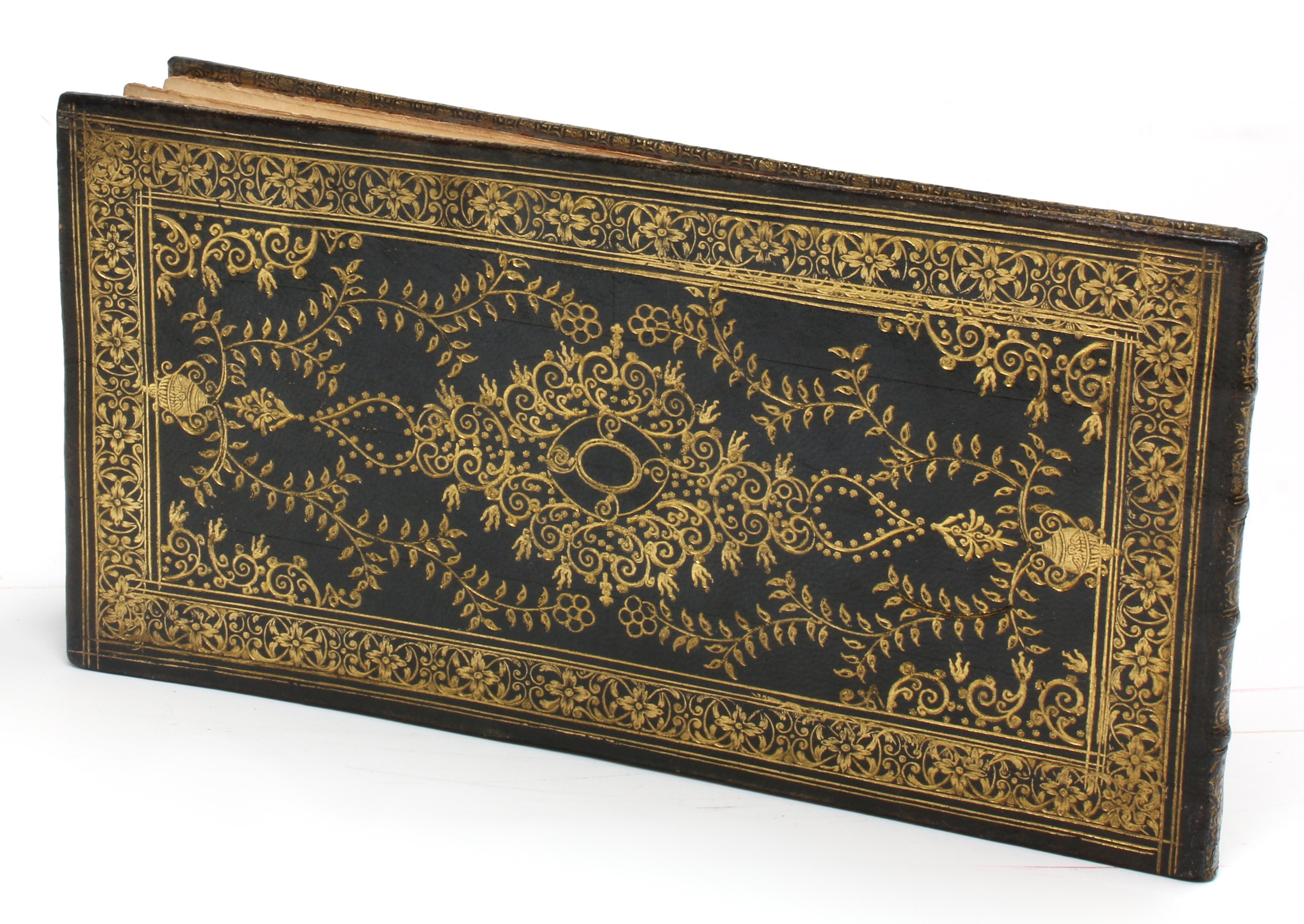Tunes for Queen Anne
Instrumentall Musick Performed before his Maj.ty on New years day 1702. Composed by John Lenton Composer to his Maj.ty.
Oblong 8vo. Musical manuscript in English, on paper written in a single cursive hand in brown ink, four staves to a page. 12 leaves: blank, title, dedication, 10 pp. of music on 6 leaves, 3 blanks. Dedication to Princess Anne on second recto. In a contemporary morocco binding, exuberantly tooled and gilt by Robert Steel, arguably the finest binder in England at the time; board edges gilt, marbled endleaves, all edges gilt.
€ 25,000.00
An exquisite manuscript musical part book, composed and bound for royal presentation on New Years' Day (then celebrated on Lady Day, March 25). Inscribed to Princess Anne of Denmark, soon to be Queen Anne of England. The pieces are labelled "Overture" and "Hornpipe", with one passage indicated "very slow". Signed "J.L." at the end.
The violinist, singer and composer Lenton joined the ensemble of royal musicians, known as the King's Musick, in 1681 under Charles II and played at the coronations of James II and of William and Mary (cf. New Grove X, 665). As violinist, Lenton accompanied William to Holland in 1691 and contributed to the royal musical repertoire. He wrote incidental music for some dozen plays between 1682 and 1705 and accumulated the offices of Gentleman Extraordinary at the Royal Chapel (1685) and Groom of the Vestry (1708). The binder Robert Steel (fl. 1668-1711) apprenticed with Samuel Mearne and took possession of his tools after his death in 1686. In turn, one of Steel's workmen, Thomas Elliott, secured Mearne's tools and became a principal binder for the Harleian Library.
In fine condition: the splendid binding shows a repeated flower-and-foliage tool flanked by rules forming the outer frame; the panels have a pot at the left and the right from which spread vines with fine small leaves; flame-tipped volutes in the corners and around the open strapwork central medallion from which extend rule hearts flanked by dots; daisies and foliage cover the spine.
For the binding cf. Maggs Bros., Bookbinding in the British Isles Catalogue 1075 (1987), no. 118 (the outer frame tool, there called a roll) and Catalogue 1212 (1996), nos. 69 (leaves on the spine) & 70 (frame tool), as well as Foot, The Henry Davis Gift II, no. 148.














